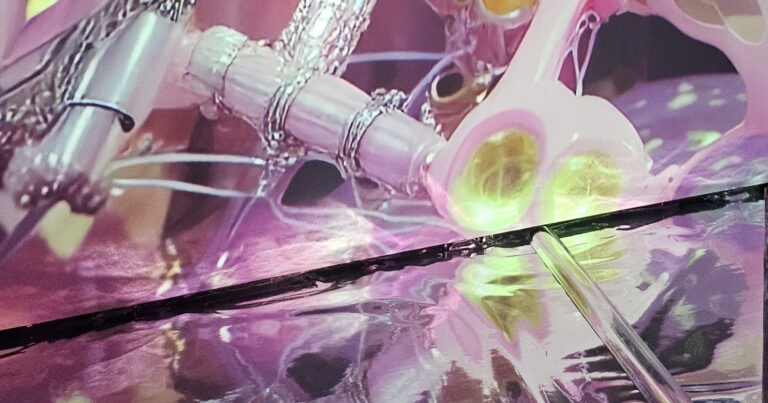Last week, I left you with Chapter 5 of the Heike Monogatari, the grand epic our earless monk was singing to the very same ghosts of the disgraced clan.
Let’s see how it continues, shall we?
6. Chapter 6
Upon the death of retired Emperor Takakura, it’s time for another general to join forces with the rising rebellion. He is Minamoto no Yoshinaka, also known as Lord Kiso, and he starts by raising an army and invading Echigo Province. At this point, the Taira don’t have nor the strength nor the focus to deal with the many different rebellions that are arising in every part of the country.
This is the point where Kiyomori’s evil deeds catch up with him: he falls ill, prey to a mysterious fever, and no remedy can cool his burning body. Water turns to flame and black smoke when it’s sprinkled upon him and his wife, Taira no Tokiko, dreams of his husband being dragged to hell in a burning carriage and being tortured for eternity in retribution for his burning of so many Buddhist temples. The powerful scene of Kiyomori’s illness also makes for some beautiful illustrations like this one by Tsukioka Yoshitoshi where you have the delirious leader and his grieving wife, surrounded by the spirits who are awaiting revenge.
After Kiyomori’s death, he is succeeded by his son Taira no Munemori. Upon his deathbed, Kiyomori’s last words are of revenge: he requires that the head of Minamoto no Yoritomo will be hung next to his grave.
7. Chapter 7
Lord Kiso, Minamoto no Yoshinaka, allies with Minamoto no Yoritomo and the two look more and more threatening. The Taira have no choice but to gather a large army and they march north, pillaging and burning villages on their road. The only intermission in this streak of violence seems to come from Taira no Tsunemasa, who stops at a small island to pray and compose a poem. The scene is vastly illustrated, as you can imagine, starting from Yoshitoshi Tsukioka’s One Hundred Aspects of the Moon that you can see below. The one with better colours is preserved at the British Museum.
His retreat involves a pilgrimage to the Tsukubusuma sanctuary and the warrior plays the lute for the god Chikubu who reigns over the island. The god is very pleased with the result and appears to him in the form of a white dragon which, given how things turn out, would have been much better if he turned out in battle. The scene, including the white dragon, can be seen illustrated in this wonderful 1897 triptych by Toyohara Chikanobu.
The Siege of Hiuchi is a landmark event of this set of battles: Hiuchiyama was one of Minamoto no Yoshinaka’s fortresses and the Taira attacked it with an army led by Taira no Koremori, the only son of the virtuous (and deceased) Taira no Shigemori. The fortress was a stronghold. Not only it was built on a spike of rock, but the Minamoto had also built a dam in order to direct waters into a ditch and create a moat.
A loyal abbot from inside the fortress, however, ties a message to an arrow and is able to deliver a message to the Taira camp, revealing a way to sabotage the dam and drain the moat in order to come across.
Things are looking bad and Lord Kiso writes a prayer for divine help to the Hachiman shrine dedicated to Yahata, the protector of archery and war. And the gods seem to be looking favourably upon the Minamoto, after the many impieties committed by the Taira: Lord Kiso attacks at night, both from the front and rear, and drives the Taira forces down the Kurikara Valley. The place is so narrow, and the Taira forces are so many, that the retreat forces almost 70,000 raiders to die crushed by each other.
Katsukawa Shun’ei illustrates the scene in 1810, in which the background surpasses by far the scene in the front. Take a look at the silhouettes of the knights falling from the cliff to their doom.
The second major battle featured in the chapter is Battle of Shinohara, in which Lord Kiso joins forces with Taira no Munemori and the Taira challenge them to an archery duel prior to the battle. Victory goes to the Minamoto and the Taira suffer several casualties. The battle is famous for the several accounts of duels that occurred among the many heroes that took part in it.
Taira no Munemori flees with the young Emperor and the three traditional Imperial Regalia: the sword Kusanagi no Tsurugi, which represents the virtue of valour; the mirror Yata no Kagami, which represents wisdom and honesty; the jewel Yasakani no Magatama, which represents the throne’s benevolence. Kiyomori’s brother, Taira no Tadanori flees the capital in a different direction, but not before leaving his poems to Akihiro, another famous poet and his master. He is famously illustrated resting under a cherry tree in this beautiful piece by Daikokuya Heikichi.
Akihiro, whose real name was Fujiwara no Shunzei, is one of the most famous and innovative poets of his time: one of his most significant works is the Senzai Wakashū, an Imperial anthology known as The Collection of a Thousand Years. It’s the seventh known collection of Imperial poetry. But that’s a story for another time.
By the end of this very belligerent chapter of the Heike Monogatari, Taira no Tsunemasa (the same guy who stopped at the island to have a chat with the white dragon) returns a mythic lute to the temple of Ninna-ji, the head temple of the Omuro school of the Shingon Sect in Kyoto, but this can’t win much favour from karma if, in parallel, the other Taira are doing nice things like setting fire to the Fukuhara-kyō palace. Because every chapter has to end in fire.
8. Chapter 8
Minamoto no Yoshinaka’s armies have won. The retired Emperor Go-Shirakawa can finally return to the capital. A new ruler is instated, under the name of Emperor Go-Toba, and the Taira are condemned as rebels: they are hunted out of government positions and have to flee. This, of course, means civil war.
The Taira tries to set up a new capital in Kyūshū, but local warriors side with the new Emperor and they have to flee from there as well. They eventually hide in Yashima, where their downfall is made manifest: once installed in imperial palaces, they now live in degraded huts.
Meanwhile, Minamoto no Yoritomo is officially nominated shōgun, which literally means “Commander-in-Chief of the Expeditionary Force Against the Barbarians”, and I think we all know who these barbarians are. The tale takes great pride in showing us what a courteous and kind lord Yoritomo is, in opposition to the arrogant and ignorant behaviour that his ally Lord Kiso is displaying in the capital. It is almost as saying that you need a barbarian to win wars, but then you need to get rid of them as soon as possible, or else you’ll become a barbarian yourself.
Meanwhile, however, the Taira have regained their forces and Lord Kiso sends an army to crush them in one of their bases, the small island of Yashima, just offshore of Mizushima. In the homonymous battle, however, the Taira surprise the Minamoto army while they’re trying to cross the inland sea, by tying together their ships and putting planks above them to create a large platform for land troops, with horses and everything. After launching a rain of arrows on the Minamoto fleet, they approach with their floating platform and crush them in hand-to-hand combat. It’s famous the scene of the Taira swimming ashore on their horses after sinking the Minamoto’s fleet during this battle.
Minamoto no Yukiie, Yoritomo’s uncle, had already been defeated by Taira no Shigehira in the Battle of Sunomatagawa when he had tried unsuccessfully to destroy the Yahagigawa bridge. This time, he tries again at the Battle of Muroyama, with no more success than before: the Taira attack in successive waves and wear down his men, forcing them to flee.
But this is not enough, as the Minamoto start infighting as well: during the Siege of Hōjūjidono, in which Lord Kiso fights against his own ally, the retired Emperor Go-Shirakawa, for the control of the Minamoto clan itself. Kiso had grown arrogant after his victories and had decided either to split from the clan or take control of it. Plotting with Minamoto no Yukiie, the defeated leader of Muroyama, they plotted to kidnap the Emperor and establish their own government, but they are immediately opposed by both court nobles and warrior monks. They are initially able to leave the city with their hostage, but the other Minamoto catch up with him and they do so in a familiar place: the Bridge over the Uji.
The Second Battle of Uji is fought here: his cousins Noriyori and Yoshitsune are following him across the river, but Yoshinaka had destroyed the bridge in order to prevent them from pursuing him, in a reversal of what happened in the first battle. And, just like it happened in the first battle, Minamoto no Yoshitsune crosses the river with his horses and is victorious.
9. Chapter 9
Lord Kiso was preparing to strike the Taira in all his might, but Minamoto no Yoshitsune arrived to break the eggs in his basket, and these inner struggles of course play at an advantage for the Taira. Yoshitsune takes the capital back and Lord Kiso tries to flee with his foster brother Imai Kanehira and Tomoe Gozen, the famous lady archer. However, Kiso’s horse gets stuck in the mud of a paddy field (a term I learned today) and he is famously killed while being thus impaired. What is sometimes described as his final stand at Awazu is one of the most famous scenes of the epic and one of the most illustrated.
The Taira take advantage of this moment of respite and retreat to Fukuhara-kyō, where they had attempted to move the Capital in their failed coup. They fortify a nearby location, the Ichi-no-tani fortress, turning it into their stronghold and preparing to face the imminent and inevitable attack from the Minamoto forces. When they finally attack, they do from two sides: Minamoto no Yoshitsune’s half-brother Minamoto no Noriyori, sixth son of Minamoto no Yoshitomo, arrives from East, but Yoshitsune himself, back from his successful retaking of the Capital, arrives from the North, the backside of the fortress, following an old horse which shows him the way across a secluded pathway in the mountains. Once again, fate seems to be siding with the Minamoto.
Possibly the most famous passage of this section is the duel between Taira no Atsumori and Kumagai Naozane. Kumagai no Jirō Naozane was a soldier in the Minamoto army who had originally sided with the Taira, but soon had switched sides at the sight of the Taira’s impieties and excesses. He intercepted Atsumori on the beach at Suma while the Taira forces were already fleeing on their ships and he’s well aware he has caught a prince in his flight, but he’s unaware of Atsumori’s young age. He becomes aware of it only after overpowering him, at the moment of striking the fatal blow, and finds himself hesitating, as the young prince is roughly the same age of his own son. The approach of other warriors who will be less merciful than him, however, prompts him to strike the fatal blow and grief apparently doesn’t stop him from looting his body, as we do.
While going through his belongings, however, Kumagai finds a famous flute known as the Saeda and he remembers hearing the melancholic and beautiful sound of a flute coming from the enemy’s encampment, that very moment. The object was an imperial gift to Taira no Tadamori, given to him by Emperor Toba, and it’s one of the most celebrated in the many versions of the Heike tale. Kumagai eventually decides to become a Buddhist monk.
Anyway, the Taira are fleeing and Taira no Shigehira is captured alive. What will happen to him?
We’ll see it next week.
















No Comments